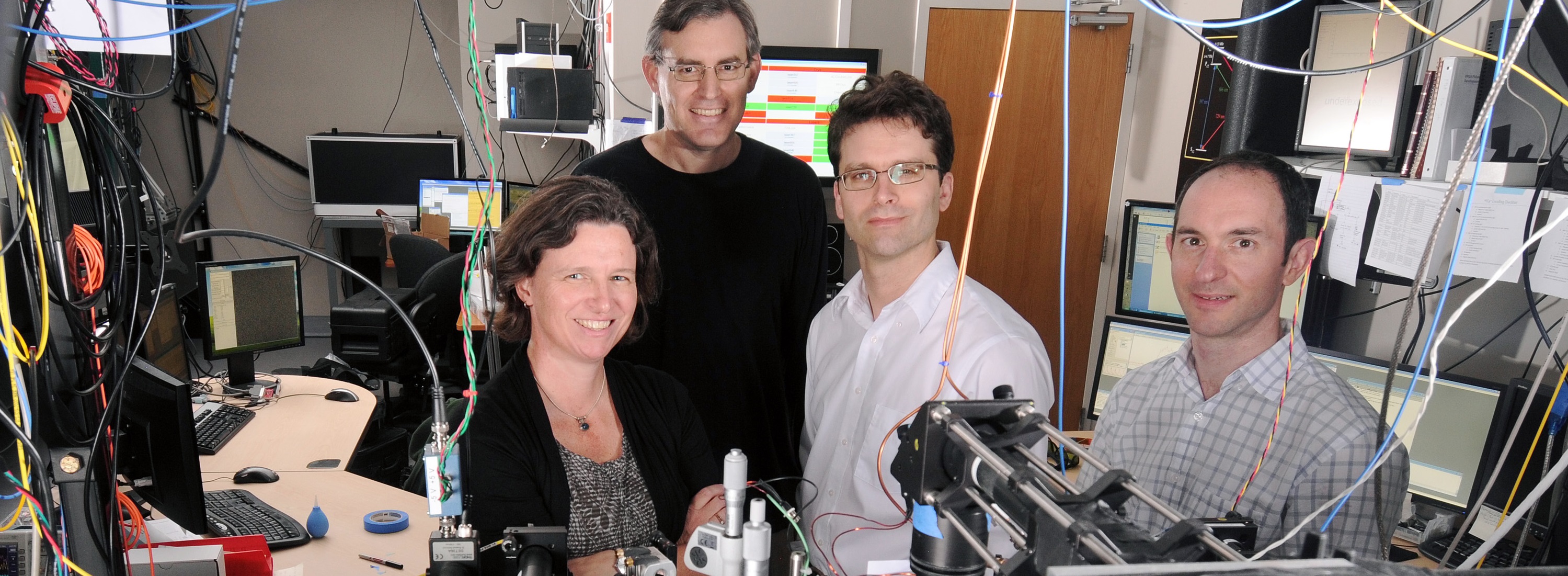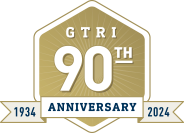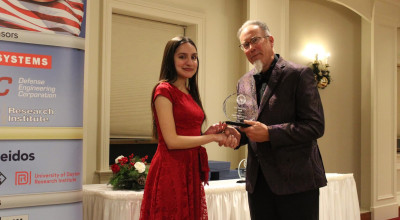
Research is being conducted worldwide to develop a new type of computational device known as a quantum computer, based on the principles of quantum physics. Quantum computers could tackle specialized computational problems such as integer factorization or big data analysis much faster than conventional digital computers. Quantum computers will use one of a number of possible approaches to create quantum bits – units known as qubits – to compute and store data, giving them unique advantages over computers based on silicon transistors.
Despite the great potential, however, quantum computing faces many significant challenges, including controlling the qubits and isolating them from a noisy environment. Scientists and engineers at the Georgia Tech Research Institute (GTRI) are helping address those challenges by designing, fabricating and testing new components and devices aimed at supporting international quantum computing efforts.
GTRI’s Quantum Information Systems (QIS) Branch uses individual trapped atomic ions as qubits in its research. In collaboration with university and industry partners, QIS scientists recently demonstrated two new ion traps, including one that uses a system of integrated mirrors to read data from multiple ions. The researchers also advanced concepts for integrating the electronic systems needed to control the ion traps inside the vacuum containers within which the traps operate. The research was sponsored by the Intelligence Advanced Research Projects Activity (IARPA) through the Army Research Office (ARO) and the Space and Naval Warfare Systems Command (SPAWAR).
“We have a wide interest in developing the technologies needed by the field and using those technologies to perform the science needed to make advancements in quantum computing,” said Alexa Harter, chief scientist of GTRI’s Advanced Concepts Laboratory and head of the Quantum Information Systems Branch. “These are all projects that move us farther along the path of integration and technology development.”
On its website, the Quantum Information Systems Branch displays diagrams for a dozen micro-fabricated ion traps, each with special properties, many of them intended to work with other devices also designed by the group. The planar ion traps are based on silicon VLSI technology and are both fabricated and tested at GTRI. The ion traps and other quantum components developed in GTRI are shared with collaborators and others in the community who are focused on the same goal.
“We now have a very impressive tool kit of technologies, techniques and systems that can be integrated for use by us and our collaborators,” said Curtis Volin, a GTRI principal research scientist in the Quantum Information Systems Branch. “Our ultimate objective is to understand what would be necessary to build a quantum computer.”
Among the recent accomplishments:
- In collaboration with Griffith University in Australia, researchers developed ion traps with integrated diffractive mirrors. High fidelity ion qubit measurements are performed by collecting laser-induced ion fluorescence, but the speed of these measurements is limited by the ability to collect the emitted light. Integrating micro-mirrors into the traps provides a more efficient way to measure the internal states of the ions by allowing more of the photons they produce to be collected. In conventional ion traps, there is only one large lens to collect data from a single ion.
“To advance quantum computing, not only do you need to trap the ions, but you also need to be able to control them and read information from them,” Volin explained. “With these integrated mirrors, we can look at as many qubits as we want, eliminating one of the obstacles to quantum research.”
The micro-mirror traps have been designed, fabricated and tested.
- The researchers have designed a new micro-fabricated ion trap with integrated microwave elements for manipulating the coherent states of ion chains. Directly manipulating qubits with microwave fields reduces system complexity and sensitivity to emission decoherence.
- Working with colleagues at Honeywell, the researchers developed a technique for integrating the electronics that control the ion traps into the devices so they can operate within vacuum chambers. That will allow an increase in the number of leads that control the ion trap, and facilitate efforts to scale up the systems to accommodate larger numbers of ions.
“We are taking these components to a new level of integration,” Harter said. “If you want to make quantum sensors that can be used in the field or develop a quantum computer of larger size, you will need to integrate the optics and electronics.”
The integrated electronic interface was fabricated using unique facilities at Honeywell. It replaced banks of electronic equipment, and could potentially allow thousands of leads to be connected.
Harter says GTRI’s niche is to work with both academic and industrial researchers to bring engineering approaches to the quantum physics discoveries coming out of labs around the world.
“The basic physics research being done on campuses around the country requires a lot of engineering to make advances in quantum computing,” she said. “Much of what we do is really engineering these basic systems that we want to make available to our collaborators.”
GTRI’s Quantum Information Systems Branch is composed of 15 scientists, engineers and students who investigate the physics of trapped ions, develop micro-fabricated ion traps and model quantum architectures, Harter noted. The group also has collaborations with academic scientists at Georgia Tech.





